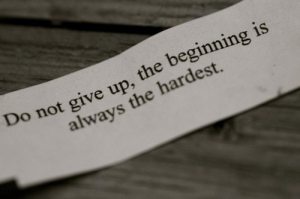I have been a proponent of the importance of leaders developing strengths as a means to improve toward excellence. After all, the best leaders are characterized by the presence of strengths, not the absence of weakness. That concept is illustrated in the article I coauthored for Harvard Business Review, called Making Yourself Indispensable. While it is clearly the path to developing the traits that allow a leader to stand out as remarkable, there are times when leaders need to address their areas of weakness. Some call these “derailleurs”, others call them “fatal flaws”, and still others, euphemistically, refer to them as “opportunities.” By any name, when those weaknesses overshadow a person’s strength, they have to be dealt with.
In my experience reviewing the data in thousands of 360-degree feedback instruments and consulting with senior leaders, these are the biggest traps that render them ineffective.
1. They are lousy role models. Leaders must be the exemplars of behaviors that are valued by any organization. They need to walk their talk and need to talk their walk. That is, they need to behave consistently with the standards set forth and actively support those standards verbally, combining actions and expressions to reinforce the desired actions.
2. They have poor interpersonal skills. We have all experienced leaders that are brilliant technically, or who possess incredible strategic thinking ability but who are abrasive, rude, and harsh to work with. As a result, they create a negative environment that stifles creativity. In other cases, a leader may simply lack any emotional engagement with others, and have simply transactional relationships. In my executive coaching work, this is by far the most common reason I get called.
4 Simple Ways To Have A Better Shot At Keeping Your New Year’s Resolutions
Erika Andersen
Contributor
Three Cs of Implementing Strategy
Scott Edinger
Contributor
3. They neglect the development of bench strength. Coaching, mentoring and developing others are the key areas of competence, when it comes to battling the inevitable attrition that occurs in a majority of organizations. When leaders fail to prioritize staff development, it not only hurts the future of the organization, it creates disengagement among individuals as they feel they are not being invested in.
4. They are closed-minded. These leaders have their way of doing things, (most often the way things have always been done,) and they are not interested in new ideas. In fact, they actively shut down suggestions from others and smother innovation. They reject even exploring new ideas on the basis that they know best.
5. They lack positive energy. Not to mention the harmful influence of negative energy. Even in a neutral state, a leader who is too often phlegmatic can come across as apathetic. No leader can be expected to hold elevated levels of enthusiasm at all times, but at least part of the time, people expect to see passion and even a little fire. The implication of this lack of positive energy is low levels of engagement for those who are lead.
6. They build silos. Collaboration, teamwork, and shared goals are more and more required for success in organizations. One of my clients is fond of saying that the profit dollars for the business “falls through the cracks between the silos.” Leaders who don’t take into account their influence on others, and think only of what their team needs, are too often, not acting in the best interest of the whole organization.
7. They fail to paint a compelling picture of the future. Few employees are motivated by the completion of tasks alone. Most want to understand their part in making the vision of the organization come to life. Providing clear strategy and direction for employees, is one of the critical success factors for leaders. Without it, individuals become mired in tasks and adrift from the mission.
At the end of the day, the saddest part about leaders who routinely exhibit these characteristics is that they are often unaware of them and the impact they are having. These leaders tend to have a very different view of themselves that others do and that gap creates problems for them. I have had to have very direct conversations with clients about the implications of their behaviors and the consequences of not changing. Frequently, that feedback can be a self-correcting mechanism as few leaders show up each day wanting to do a poor job.
Each of us needs to excel by leveraging our natural strengths and abilities. Peter Drucker pointed this out in The Effective Executive over 40 years ago, and that body of work continues to evolve today. But we also need to be mindful of avoiding these leadership traps. Your success will be determined by it!

 Use the wheel to help plan 2014
Use the wheel to help plan 2014
 Forming, Storming, Norming and Performing
Forming, Storming, Norming and Performing








